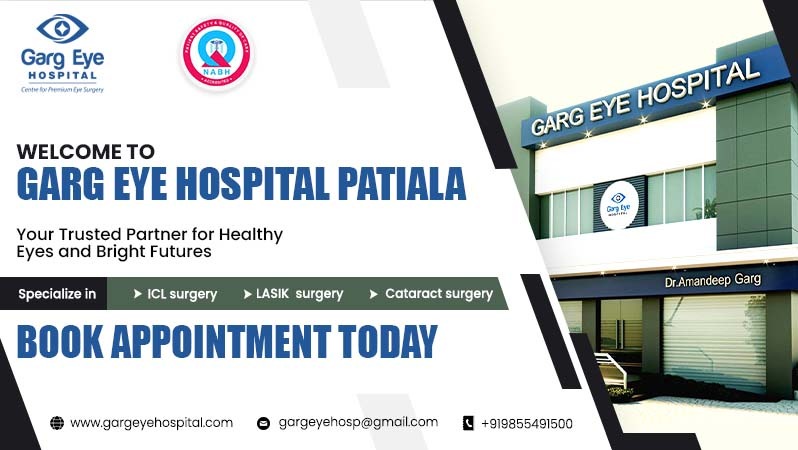- Open Hours: Mon-Sat 9:15 am - 6:30 pm
- +91 9855491500
- gargeyehosp@gmail.com
LASIK Enhancement Surgery | Everything You Need to Know
LASIK enhancement surgery refers to retreatment of Lasik surgery that takes place sometime after your initial Lasik treatment. Its purpose is to improve your vision or correct some new changes to your eyes. Like initial LASIK, an enhancement can treat nearsightedness (myopia), farsightedness (hyperopia), and astigmatism. Depending on your Lasik surgeon, you can have a repeat Lasik surgery or a similar PRK (photorefractive keratectomy) surgery. Either enhancement surgery can keep your glasses and contacts in their case in the future.
Table of Contents
ToggleWho Needs LASIK Enhancement Surgery?
A second surgery may be needed soon after your initial surgery if the vision is blurred, or later in life if there have been significant changes to your vision over time. Your ophthalmologist will do regular check-ups to monitor your recovery for the first three to six months and suggest an enhancement procedure if indicated.
On the other hand, you may have perfect vision for months to years after LASIK. But with age, your sight may change frequently. This is called regression, and you may experience an increased dependence on spectacles, your doctor may consider a second laser surgery in this case.
What to Expect During a LASIK Enhancement
When you want LASIK enhancement surgery after fully recovering from your first surgery, your experience will be nearly identical. Your doctor prescribed that you apply drops to your eye. After that, they will set a speculum near the eye to stop blinking. The doctor makes a small hole in your eye’s surface with the laser’s help. This helps them clear and reshape your eye’s cornea with a laser.
If you want a touch-up of Lasik enhancement soon after your first surgery, your doctor may prescribe you to reuse the existing cover to access your cornea. The remaining procedure of the Lasik Enhancement Surgery is exactly the same.
Your procedure is a little different when your doctor recommends PRK surgery instead of Lasik enhancement Surgery. Your doctor removed a small piece on the outer surface of your cornea instead of creating a new flap. In Lasik enhancement surgery they will use the laser to reshape the cornea.
How is this surgery different from the first LASIK surgery?
The LASIK enhancement is not so much different from the first surgery. However, the enhancement does not need the formation of the corneal flap again. Your surgeon will use a unique design to lift the flap that occurred during the first surgery. The surgeon will reshape or redesign the cornea with the help of a laser which was controlled by a powerful computer, as for the first LASIK. Since only a minimum reshaping is possible during a Lasik touch-up. This procedure is painless and it doesn’t take so much time.
What is the cost of Lasik Enhancement Surgery?
Many surgeons don’t charge extra fees for Lasik enhancement surgery performed within one year of the primary surgery. However experienced surgeons charge extra fees sometimes. The pricing policies can differ considerably among different surgeons and surgery centers.
Do we need further tests again for a second surgery?
Firstly your doctor has to do all your tests related to your first Lasik surgery to check your steadiness for the LASIK enhancement surgery. Most importantly your doctor has to check that your corneal thickness is correct or not. Mainly Lasik enhancement surgery is for the betterment of your eye after or improving the performance of the first Lasik surgery. The Lasik enhancement also removes corneal tissue to redesign your cornea and helps to remove the need for glasses.
Dangers of a LASIK Enhancement
LASIK eye surgeons use some unique lasers to redesign the cornea to the specific pattern needed for the patient. Due to an enhancement, the cornea is redesigned to the same treatment. Once the cornea has already been reshaped, there will be a few corneal tissues to work with each time of surgery. When an undesirable Lasik enhancement surgery is done some complications may occur like visual disturbances such as halos, temporary discomfort, irregular astigmatism, diffuse lamellar keratitis, and keratectasia.


